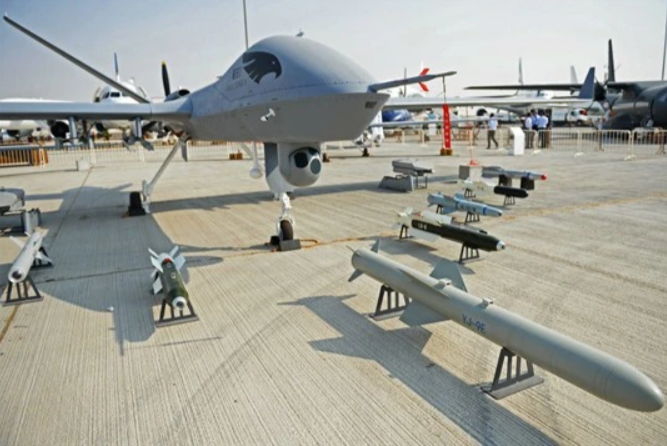(ThyBlackMan.com) The recent attack on Abu Dhabi, which was carried out by drones equipped with explosives, signifies a dramatic shift in Iran’s strategic offensive strategy. We have reached the apex of the overall drone strategy, which our adversaries have been focused on since Desert Storm in 1991. With drone technology sufficiently advanced to carry weapons and explosives, drones are now capable of deployment on both land and sea throughout the world.
The last time the United States successfully employed a large mechanized armored force was during Operation Desert Storm in 1991. However, despite this, we have gained relatively little knowledge since that campaign against Saddam Hussein. In the aftermath of that tragic conflict, every nation on the planet learned an important lesson, and our adversaries began to alter their strategies as a result: instead of engaging a military force’s most powerful strengths on just any battlefield, a military should instead seek out the vulnerabilities of their enemies and exploit them with both weapons and tactics that their adversaries are incapable of defending against. It has become clear that the advanced capabilities of drones, our failure in Afghanistan, and the military and political disaster in Iraq are all examples of how our adversaries’ tactics and strategy are evolving while the United States remains stuck in the Cold War’s post-World War II organization, purchases, and methodologies. Our opponents have gained valuable experience from each battle; on the other hand, we have refused to confront the reasons why we seem to be incapable of winning national wars and, more importantly, why we lack the strategy and capacity to prevent wars in the first place.

The drone attack in Abu Dhabi serves as a perfect example of this phenomenon. It seems unlikely at this juncture that the United States Navy has the capability to track drones, especially small ones that fly at low altitude. Tracking drones across land or water would necessitate the presence of a U.S. unit on land or at sea. However, while certain commercial marine radars may be able to identify the drones, United States Navy ships are not equipped with small, high-frequency “boat” radars, which may detect the drones.
Since Sept. 11, 2001, the United States Navy and Central Intelligence Agency have historically overlooked capabilities—both our own and those of our adversaries—at the low end of the technological spectrum; this is one of the major problems with the way we developed our defense systems.
Consider the attack on the USS Cole, which took place Oct. 12, 2000, in Yemen harbor. Three individuals in a small fiberglass boat launched a two-minute attack that sank a $1 billion state-of-the-art guided missile warship and killed 17 soldiers. A billion-dollar asset was brought back to the United States repair port like a fish on a boat deck, lying on the back of a big barge. The repair conducted on the boat took months to complete, and the amount of money expended for towing the barge out and back was likely unimaginably high. For weeks, images of one of our most advanced missile boats being destroyed by three jihadis in a single-engine fishing boat appeared in every Middle Eastern newspaper.
It is my understanding that land-based drones were utilized in the attack on Abu Dhabi, most likely from the trunk of a vehicle or van. The geography of the area is the most difficult problem in understanding how the drone assault was carried out; boat launches are undoubtedly a possibility, but I am not familiar with the United Arab Emirates’ marine security screening processes.
Due to the United States’ failure to be capable in drone tracking, it is worth mentioning an ominous, yet completely realistic fact that pertains to our nation’s capital: some bad actors could float up the Potomac River, stop for gas in Old Town Alexandria, then depart at night, launch their drones in the pitch black of the Potomac River on a moonless night, and cause havoc in Washington, D.C. This is an unavoidable consequence of now readily available capability drones; someone can simply strap a 5-pound high explosive charge on a drone and have the potential to cause significant damage in the nation’s capital. It would be practically a “name your target” affair. Law enforcement would be searching for hours to figure out where and what was causing the attack, yet in the end, it is possible that the watercraft will have traveled deep into the Chesapeake Bay, past Oregon Inlet, and into the Atlantic before sunrise.
In essence, we are unprepared because we have insufficient or nonexistent knowledge about the plans and intentions of our opponents, and both our military and law enforcement must invest in new technology and systems to track new and emerging threats.
Written by Armstrong Williams
Official website; http://twitter.com/Arightside

















Leave a Reply